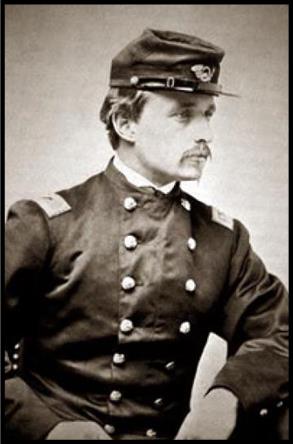While the Scots in Darian resisted the growth of slavery the same cannot be said for the rest of Georgia. By 1790 some 29,000 slaves were laboring in Georgia. By the time of the Civil War it had sadly grown to over 264,000.
 Despite it’s history of heroically resisting slavery, during the Civil War, Darien, a bastion of anti-slavery, was destroyed by occupying Union troops. The destruction of the undefended city, which was of little strategic importance, was ironically carried out by the 1st African-American military unit in the Union army, the 54th Massachusetts Volunteers, under the command of a reluctant Colonel Robert Gould Shaw.
Despite it’s history of heroically resisting slavery, during the Civil War, Darien, a bastion of anti-slavery, was destroyed by occupying Union troops. The destruction of the undefended city, which was of little strategic importance, was ironically carried out by the 1st African-American military unit in the Union army, the 54th Massachusetts Volunteers, under the command of a reluctant Colonel Robert Gould Shaw.
The First African Baptist Church (claimed to be the oldest African-American church in the county) was also destroyed along with the rest of the town. It was rebuilt and later some meetings of the 20th-century Civil Rights Movement were held there.
Following the Civil War, Darien was rebuilt, with financial aid coming in small part from the family of Colonel Robert Gould Shaw. He had been killed during the war, but had written to his family of his shame in participating in the destruction of Darien.
Darien continued to grow and by the early 1900s it was one of the largest Southeastern ports for shipping lumber. When the timber was depleted, Darien became a fishing village, known primarily for Georgia wild shrimp. It was once famous for its oysters. Today, in the age of tourism, Darien has flourished with an emphasis on its historic heritage and the waterfront.